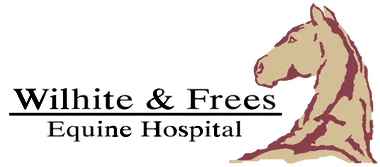Help Your Mare Have a Safe Delivery
If your mare has made it through 11 months of pregnancy, you’re almost home free. Labor and
delivery, while momentous, are generally uneventful. In most cases, you will simply need to be a
quiet observer – if, that is, you are lucky enough to witness the birth. Mares seem to prefer to foal
at night in privacy, and apparently have some control over their delivery. Because most mares
foal without difficulty, it is usually best to allow the mare to foal undisturbed and unassisted.
What you can do, however, is prepare your mare for a safe and successful delivery.
Follow these suggestions from the American Association of Equine Practitioners (AAEP) to help
the new mother and baby get off to a great start:
• Write down your veterinarian’s phone number well in advance of the birth and keep it by all
phones.
• Keep a watch or clock on hand so you can time each stage of labor. When you’re worried or
anxious, your perception of time becomes distorted. The watch will help you keep accurate
track of the mare’s progress during labor.
• Wrap the mare’s tail with a clean wrap when you observe the first stage of labor. Be sure that
the wrap is not applied too tightly or left on too long, as it can cut off circulation and
permanently damage the tail.
• Wash the mare’s vulva and hindquarters with a mild soap and rinse thoroughly.
• Clean and disinfect the stall area as thoroughly as possible and provide adequate bedding.
• Consider using test strips that measure calcium in mammary secretions to help predict when
the mare will foal. Sudden increases in calcium are associated with imminent foaling.
If a mare is taking longer than 30 minutes to deliver the foal, call your veterinarian
immediately.
For more information on labor and delivery and postpartum care for the mare and foal, ask
your equine veterinarian for a copy of the “Foaling Mare and Newborn” client education brochure,
provided by the AAEP in partnership with Educational Partner Bayer Animal Health. Additional
information can be found on www.aaep.org/horseowner, the AAEP’s website for all horse health
topics.
Reprinted with permission from the American Association of Equine Practitioners.
Help your Foal Grow with Proper Nutrition
A healthy foal will grow rapidly, gaining in height, weight and strength almost before your eyes.
From birth to age two, a young horse can achieve 90 percent or more of its full adult size,
sometimes putting on as many as three pounds per day. Feeding young horses is a balancing act,
as the nutritional start a foal gets can have a profound affect on its health and soundness for the
rest of its life.
At eight to ten weeks of age, mare’s milk alone may not adequately meet the foal’s
nutritional needs, depending on the desired growth rate and owner wants for a foal. As the foal’s
dietary requirements shift from milk to feed and forage, your role in providing the proper
nutrition gains in importance. Following are guidelines from the American Association of
Equine Practitioners (AAEP) to help you meet the young horse’s nutritional needs:
1. Provide high quality roughage (hay and pasture) free choice.
2. Supplement with a high quality, properly balanced grain concentrate at weaning, or
earlier if more rapid rates of gain are desired.
3. Start by feeding one percent on a foal’s body weight per day (i.e., one pound of feed for
each 100 pounds of body weight), or one pound of feed per month of age.
4. Weigh and adjust the feed ration based on growth and fitness. A weight tape can help
you approximate a foal’s size.
5. Foals have small stomachs so divide the daily ration into two to three feedings.
6. Make sure feeds contain the proper balance of vitamins, minerals, energy and protein.
7. Use a creep feeder or feed the foal separate from the mare so it can eat its own ration.
Try
to avoid group creep feeding situations.
8. Remove uneaten portions between feedings.
9. Do not overfeed. Overweight foals are more prone to developmental orthopedic disease
(DOD).
10. Provide unlimited fresh, clean water.
11. Provide opportunity for abundant exercise.
The reward for providing excellent nutrition and conscientious care will be a healthy foal that
grows into a sound and useful horse. For more information about providing proper nutrition for
your foal, talk with your equine veterinarian and ask for the “Foal Growth” education brochure
provided by the AAEP in conjunction with Education Partners Bayer Animal Health and Purina
Mills. Additional information about foal nutrition can also be found on the AAEP’s website
www.aaep.org/horseowner.
Reprinted with permission from the American Association of Equine Practitioners.
